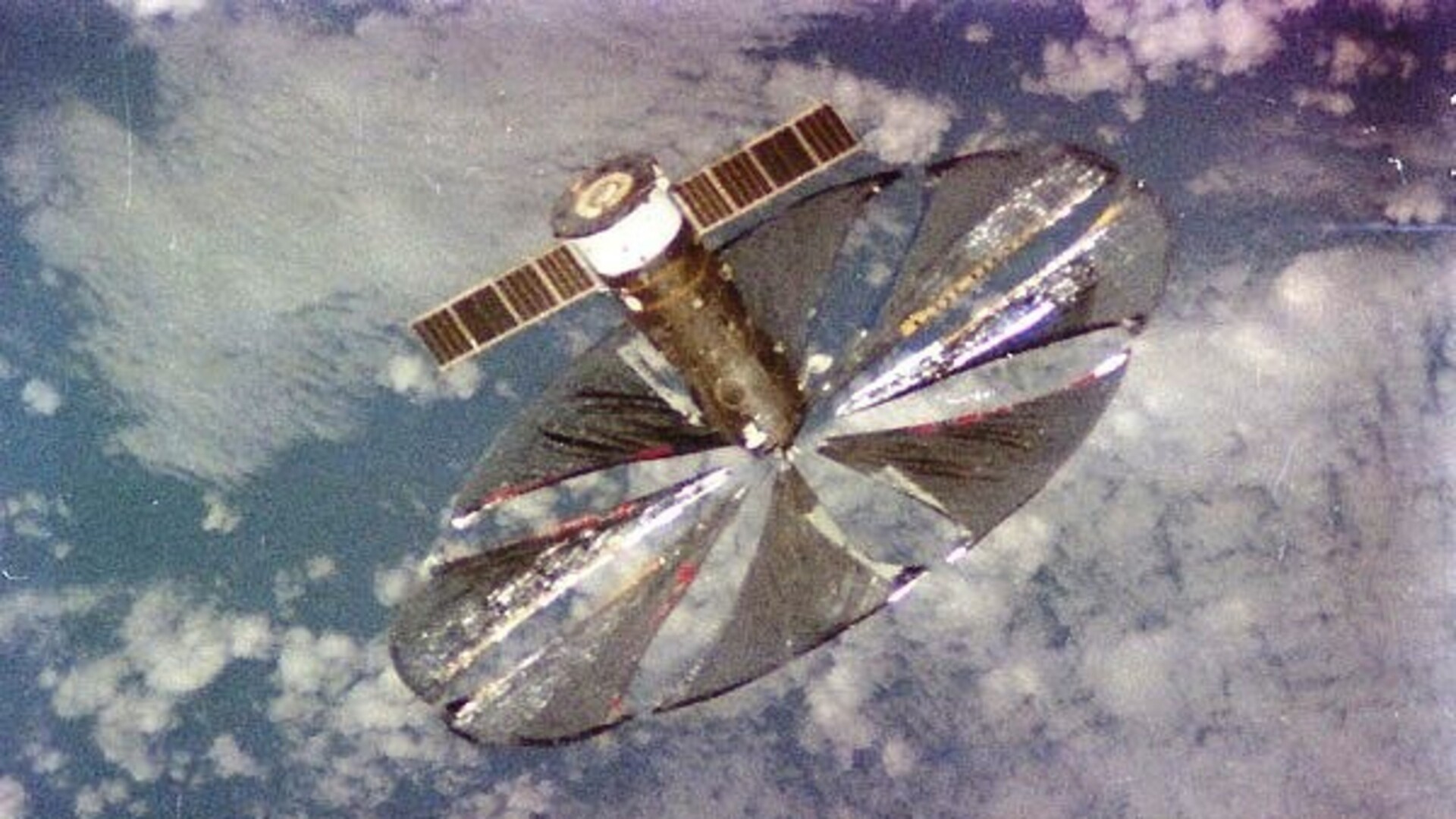How Russian scientists wanted to illuminate the Earth from space

For six minutes, a huge (it reached five kilometers in diameter) light spot moved over Lyon, Bern, Munich, Prague, Lodz, Brest and Gomel. Although the weather was cloudy, flashes of light were noticeable. And meteorologists, after studying their brightness, concluded that they were comparable to a full moon.
‘Znamya’ (‘The Banner’) came about as a response to a contest for the 500th anniversary of Columbus' discovery of America. Its participants had to create a ship that would travel to the Moon and then to Mars on a solar sail. The space regatta never took place, but the Soviet Union started developing its own project.
Scientists designed a sail from a film material with a reflective coating that was held open by centrifugal forces. It was then rolled up and sent into orbit, along with a device that set the sail in motion. Finally, the light sail gradually unfolded and reflected the sunlight. Scientists rejoiced!
In 1999, a new stage of the experiment, titled ‘Znamya-2.5’, took place. From the Earth, the reflection of the 25-meter sail was supposed to be as bright as 5-10 full Moons, with the light planned to be held in one place. However, a programming error caused the sail panel to get caught on the antenna. The unsuccessful experiment put an end to the short-lived history of the Banner. The third stage, during which it was planned to deploy a sail with a diameter of 70 meters, was not carried out.

